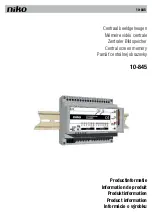
23
D-ILA Method Present Condition and Subject
22
The basic setup for a horizontal stack configuration is shown below.
Screen size (4:3)
80
90
100
110
120
130
140
150
160
170
180
190
200
Width
1626
1829
2032
2235
2438
2642
2845
3048
3751
3454
3657
3861
4064
Height
1219
1372
1524
1676
1829
1981
2134
2286
2438
2591
2743
2896
3048
1540.1
1747.47
1954.85
2162.23
2369.6
2576.97
2784.34
2991.71
3199.08
3406.44
3613.81
3821.17
4028.54
Lens top point
80
85
90
95
100
105
110
115
120
125
230
135
140
145
150
155
160
165
170
175
180
185
190
195
20
250
300
350
400
450
1626
1727
1829
1931
2032
2134
2235
2337
2438
2540
2642
2743
2845
2946
3048
3150
3751
3353
3454
3556
3657
3759
3861
3962
4064
5080
6096
7112
8128
9144
1219
1295
1372
1449
1524
1600
1676
1753
1829
1905
1981
2057
2134
2210
2286
2362
2438
2515
2591
2667
2743
2819
2896
2972
3048
3810
4572
5334
6096
6858
2368
2520
2672
2825
2976
3129
3281
3433
3585
3738
3890
4042
4194
4347
4499
25.15
23.67
22.34
21.16
20.12
19.16
18.29
17.49
16.76
16.09
15.48
14.90
14.37
13.87
13.41
13.00
12.57
12.20
11.83
11.50
11.18
10.88
10.59
10.32
10.06
8.05
6.71
5.75
5.03
4.47
24.85
26.33
27.66
28.84
29.88
30.84
31.71
32.51
33.24
33.91
34.52
35.01
35.63
36.13
36.59
37
37.43
37.8
38.17
38.5
38.82
39.12
39.41
39.68
39.94
41.95
43.29
44.25
44.97
46.53
25.85
27.33
28.66
29.84
30.88
31.84
32.71
33.51
34.24
34.91
35.52
36.10
36.63
37.13
37.59
38.00
38.43
38.8
39.17
39.50
39.82
40.12
40.41
40.68
40.94
42.95
44.29
45.25
45.97
47.53
26.85
28.33
29.66
30.84
31.88
32.84
33.71
34.51
35.24
35.91
36.52
37.10
37.63
38.13
38.59
39.00
39.43
39.80
40.17
40.50
40.82
41.12
41.41
41.68
41.94
43.95
45.29
46.25
46.97
48.53
27.85
29.33
30.66
31.84
32.88
33.84
34.71
35.51
36.24
36.91
37.52
38.10
38.63
39.13
39.59
40.00
40.43
40.80
41.17
41.50
41.82
42.12
42.41
42.68
42.94
44.95
46.29
47.25
47.97
49.53
28.85
30.33
31.66
32.84
33.88
34.84
35.71
36.51
37.24
37.91
38.52
39.10
39.63
40.13
40.59
41.00
41.43
41.80
42.17
42.50
42.82
43.12
43.41
43.68
43.94
45.95
47.29
48.25
48.97
50.53
29.85
31.33
32.66
33.84
34.88
35.84
36.71
37.51
38.24
38.91
39.52
40.10
40.63
41.13
41.59
42.00
42.43
42.8
43.17
43.5
43.82
44.12
44.41
44.68
44.94
46.95
48.26
49.25
49.97
51.53
Screen size
(4:3)
Width
Height
Y=50
Y=51
Y=52
Y=53
X
Y=54
Y=55
Throw
distance
(306.6/H)*100
Screen upper edge
Screen lower edge
Horizontal stacking (DLA-M4000 x 2)
Leave a space of more than 340 mm
Screen upper edge
Screen lower edge
Stacking by suspending
from the ceiling (DLA-M15 x 2)
Stacking on the floor (DLA-M15 x 2)
Important:
•
Depending on the screen characteristics, different viewing angles can produce variations in illumination and color tone.
Be sure to take this into consideration when selecting the screen. Consult your JVC dealer for more information
regarding screen selection. The type of screen you use is especially important if you are using rear projection.
m
D-ILA-M4000 1:1 lens throw distance table
If you need a compact, high-intensity projection system,
you can stack two DLA-M15s in a vertical configuration.
When two DLA-M15s are stacked on a dedicated
stacking platform and the two projection images are
superimposed with the manual lens shift function, doubled
brightness can be obtained. Available dedicated stacking
platforms include a ceiling type and floor type.
Note:
As the two projection images are superimposed,
registration differences appear in the center and peripheral
areas of the screen due to the lens distortion. Use the
center portion of the optical lens to minimize the
registration difference. This difference cannot be
eliminated because it is caused by lens distortion. The
smaller the lens magnification, the less the distortion.
m
D-ILA-M15 stack shift table
2. DLA-M15 stacking system
Note:
•
This table is based on the assumption that two DLA-M15s are stacked on a stacking table.
When the offset axis of unit A is X% and that of unit B is Y%, X is obtained with Y = 50 to 55 in the formula
Y
1
X = 306.6/H x 100 (provided that the offset axis of the DLA-M15 is 30 to 55%).
Stacking systems
Stacking systems
Vertical stacking limit range:
The DLA-M4000s can be stacked within the area from the screen
upper edge to the lower edge.
Summary of Contents for DLA-G20
Page 1: ...Printed inJapan XXX 0000 ...








































